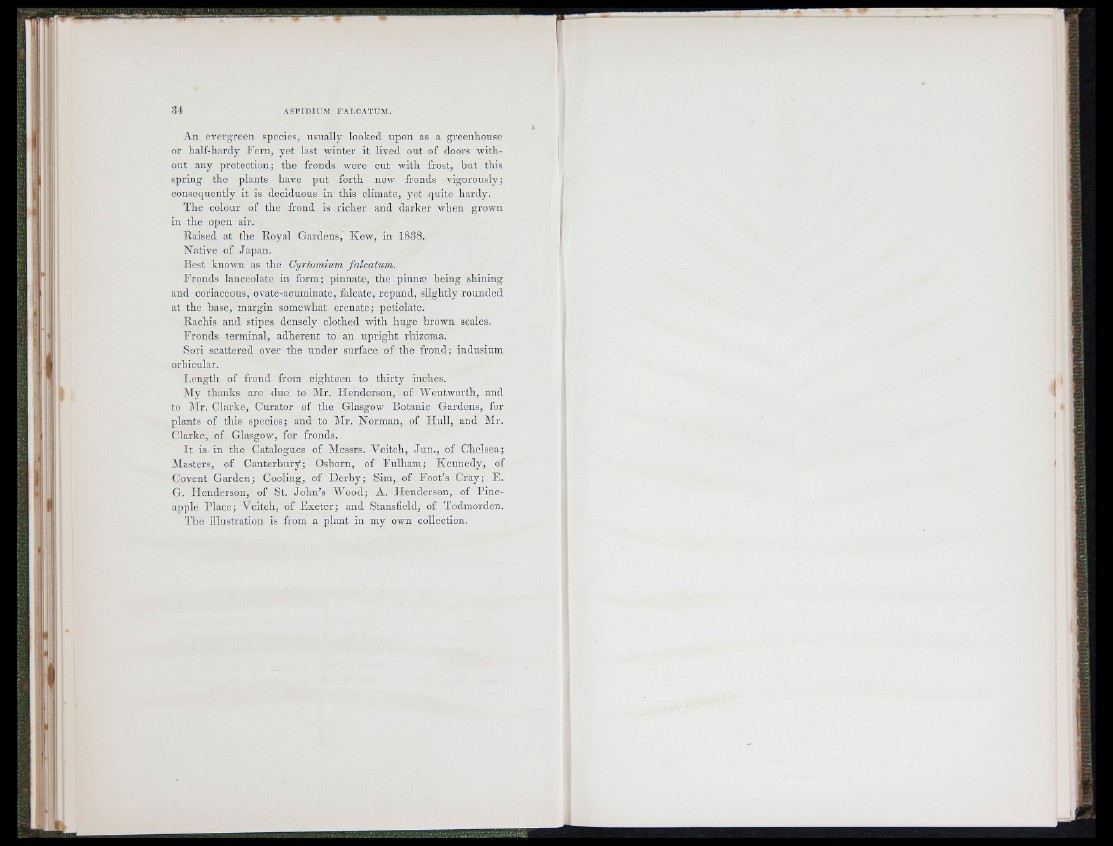
m
I
34 A S P ID IU 'M FA L C A T U M .
An evergreen species, usually looked upon as a greenhouse
or half-hardy Fern, yet last winter it lived out of doors without
any protection; the fronds were cut with frost, b ut this
spring the plants have put forth new fronds vigorously;
consequently it is deciduous in this climate, yet quite hardy.
The colour of the frond is richer and darker when grown
in the open air.
Raised at the Royal Gardens, Kew, in 1838.
Native of Japan.
Best known as the Cyrtomium falcatum.
Fronds lanceolate in form; pinnate, the pinnæ being shining
and coriaceous, ovate-acuminate, falcate, repand, slightly rounded
at the base, margin somewhat crenate; petiolate.
Rachis and stipes densely clothed with huge brown scales.
Fronds terminal, adherent to an upright rhizoma.
Sori scattered over the under surface of the frond; indusium
orbicular.
Length of frond from eighteen to thirty inches.
My thanks are due to Mr. Flenderson, of Wentworth, and
to jMr. Clarke, Curator of the Glasgow Botanic Gardens, for
plants of this species; and to Mr. Norman, of Hull, and Mr.
Clarke, of Glasgow, for fronds.
I t is in the Catalogues of Messrs. Veitch, Jun ., of Chelsea;
Masters, of Canterbury; Osborn, of Fulham; Kennedy, of
Covent Garden; Cooling, of Derby; Sim, of Foot’s Cray; E.
G. Henderson, of St. Jo h n ’s Wood; A. Henderson, of Pineapple
Place; Veitch, of Exeter; and Stansfield, of Todmorden.
The illustration is from a plant in my own collection.